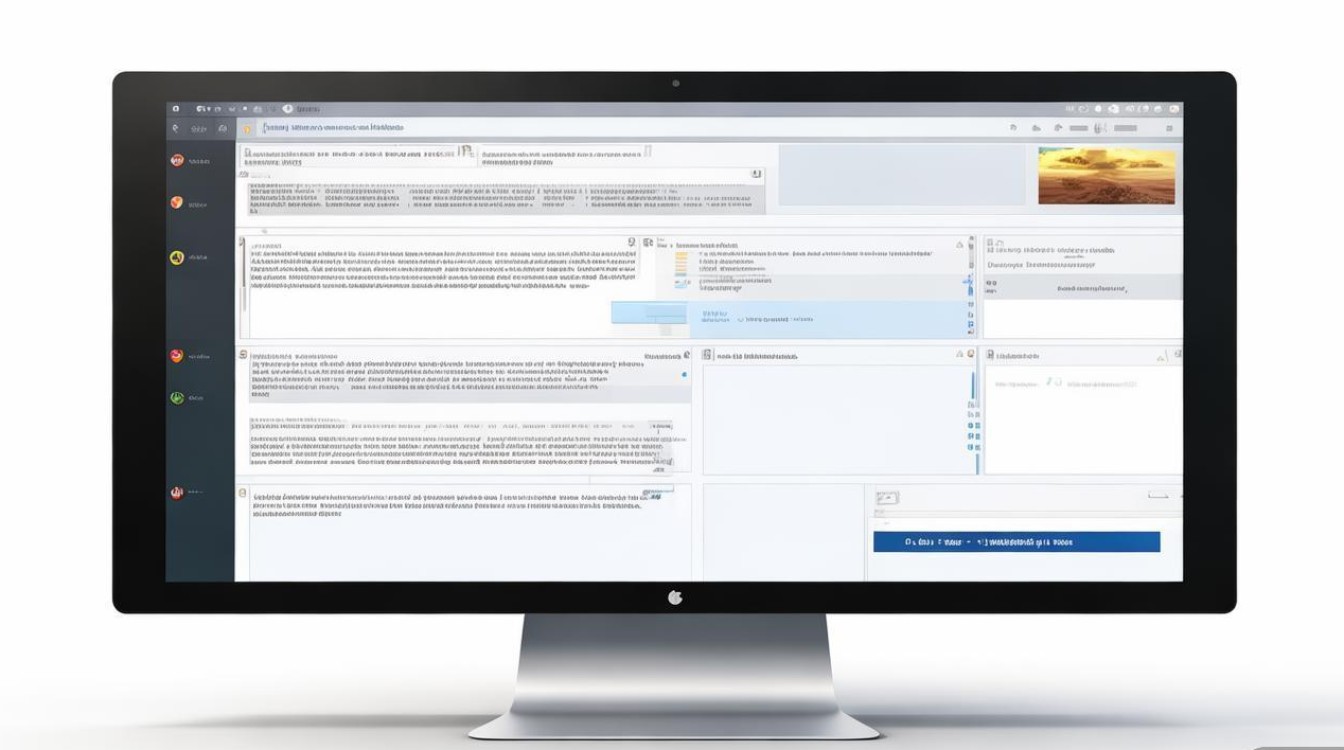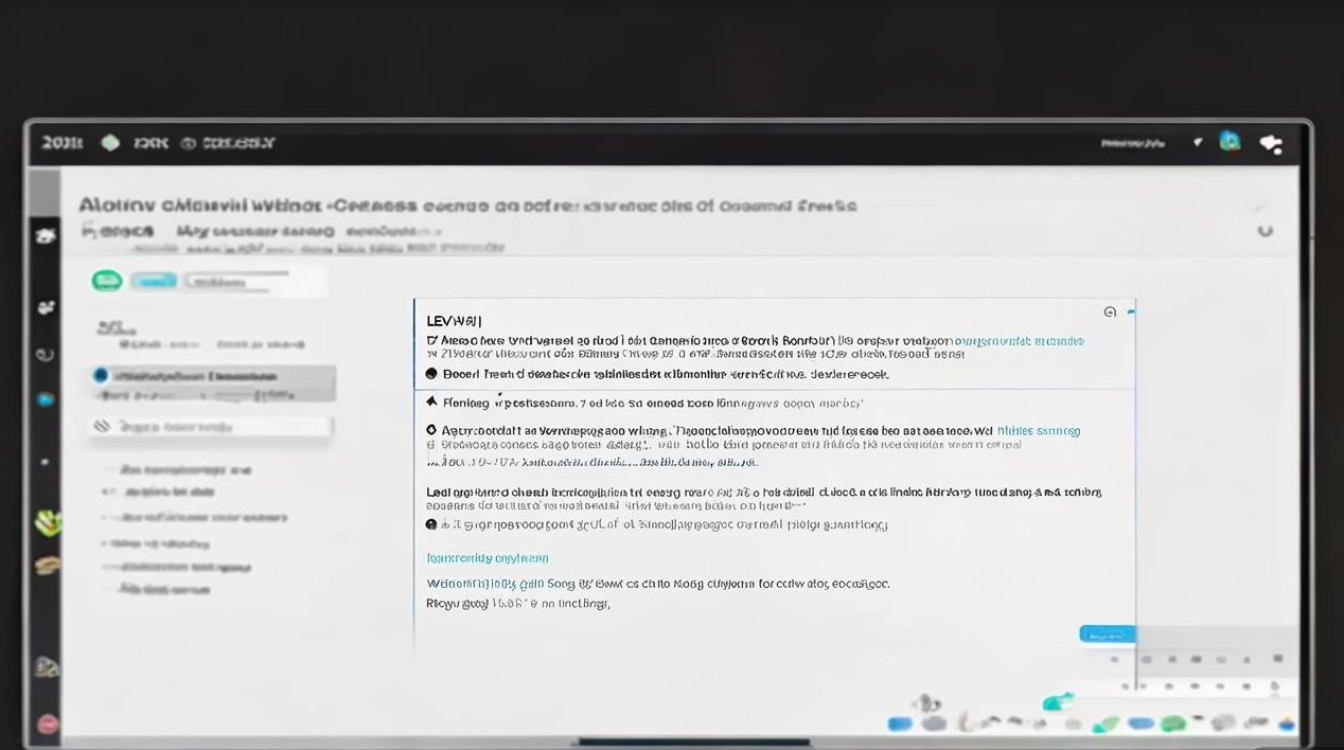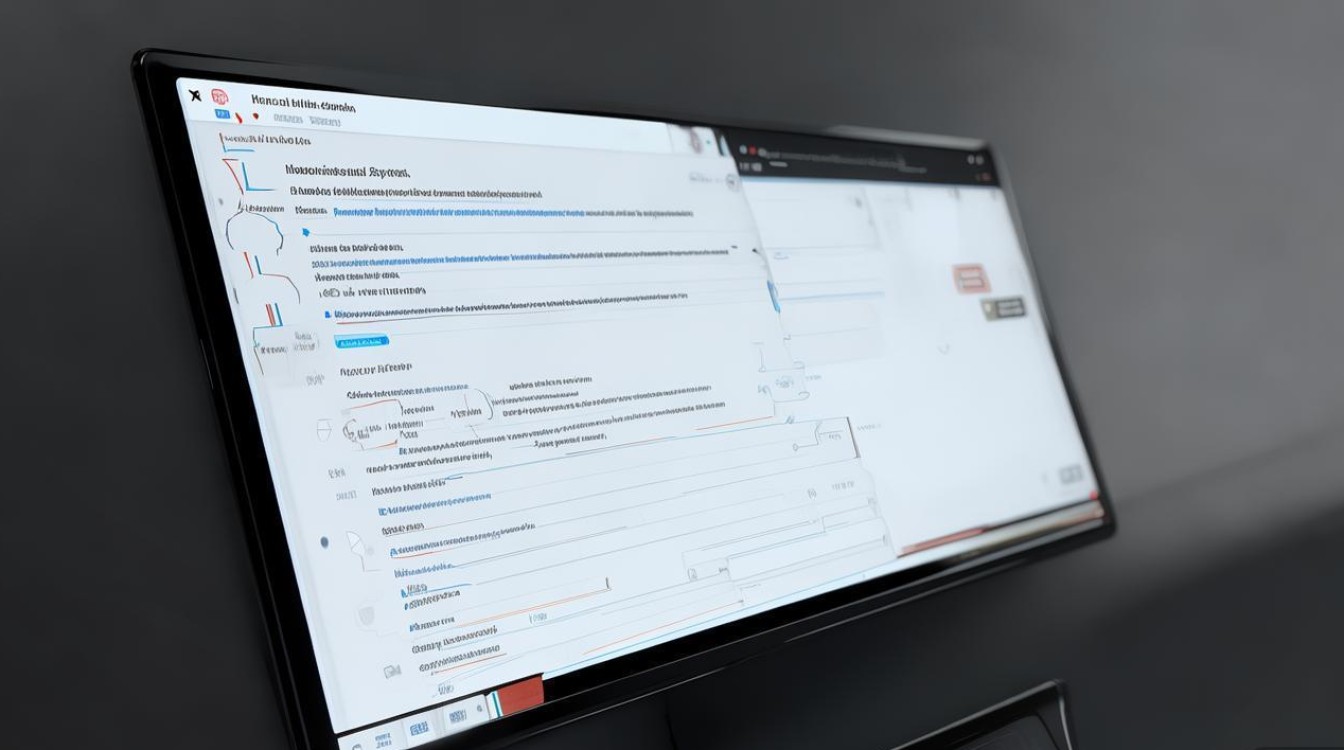在安卓应用开发中,获取并显示数据库内容是常见需求,通常通过SQLite数据库结合ContentProvider或ORM框架(如Room)实现,以下是详细步骤和注意事项,涵盖从数据库创建到数据展示的全流程。
数据库创建与配置
继承SQLiteOpenHelper
创建一个类继承SQLiteOpenHelper,重写onCreate()和onUpgrade()方法,在onCreate()中执行建表SQL语句,public class MyDatabaseHelper extends SQLiteOpenHelper { private static final String DATABASE_NAME = "mydatabase.db"; private static final int DATABASE_VERSION = 1; private static final String TABLE_NAME = "users"; private static final String COLUMN_ID = "id"; private static final String COLUMN_NAME = "name"; public MyDatabaseHelper(Context context) { super(context, DATABASE_NAME, null, DATABASE_VERSION); } @Override public void onCreate(SQLiteDatabase db) { String CREATE_TABLE = "CREATE TABLE " + TABLE_NAME + " (" + COLUMN_ID + " INTEGER PRIMARY KEY AUTOINCREMENT, " + COLUMN_NAME + " TEXT)"; db.execSQL(CREATE_TABLE); } @Override public void onUpgrade(SQLiteDatabase db, int oldVersion, int newVersion) { db.execSQL("DROP TABLE IF EXISTS " + TABLE_NAME); onCreate(db); } }插入测试数据
在应用初始化时,可通过MyDatabaseHelper插入示例数据,确保后续查询有内容可展示。
查询数据库内容
使用原始SQL查询
通过SQLiteDatabase的rawQuery()或query()方法执行查询。SQLiteDatabase db = dbHelper.getReadableDatabase(); Cursor cursor = db.query(TABLE_NAME, null, null, null, null, null, null);
解析Cursor数据
遍历Cursor对象,获取每列的值:
if (cursor.moveToFirst()) { do { int id = cursor.getInt(cursor.getColumnIndex(COLUMN_ID)); String name = cursor.getString(cursor.getColumnIndex(COLUMN_NAME)); // 处理数据 } while (cursor.moveToNext()); } cursor.close();
数据展示方式
使用ListView或RecyclerView
ListView适配器
继承BaseAdapter,在getView()方法中将数据绑定到列表项布局:public class UserAdapter extends BaseAdapter { private List<String> userList; public UserAdapter(List<String> userList) { this.userList = userList; } @Override public View getView(int position, View convertView, ViewGroup parent) { convertView = LayoutInflater.from(parent.getContext()) .inflate(R.layout.list_item, parent, false); TextView textView = convertView.findViewById(R.id.text_view); textView.setText(userList.get(position)); return convertView; } // 其他必要方法... }RecyclerView适配器
使用RecyclerView.Adapter,通过onBindViewHolder()绑定数据:public class UserRecyclerViewAdapter extends RecyclerView.Adapter<UserRecyclerViewAdapter.ViewHolder> { private List<User> users; public static class ViewHolder extends RecyclerView.ViewHolder { public TextView textView; public ViewHolder(View itemView) { super(itemView); textView = itemView.findViewById(R.id.text_view); } } @Override public void onBindViewHolder(ViewHolder holder, int position) { holder.textView.setText(users.get(position).getName()); } // 其他必要方法... }
数据绑定到UI控件
将查询结果直接显示在TextView、EditText等控件中:
TextView textView = findViewById(R.id.display_text);
StringBuilder sb = new StringBuilder();
while (cursor.moveToNext()) {
sb.append("ID: ").append(cursor.getInt(0))
.append(", Name: ").append(cursor.getString(1)).append("n");
}
textView.setText(sb.toString()); 使用Room简化操作
Room是谷歌推荐的ORM框架,通过注解简化数据库操作:

定义实体类
@Entity(tableName = "users") public class User { @PrimaryKey(autoGenerate = true) private int id; private String name; // Getter和Setter }创建DAO接口
@Dao public interface UserDao { @Query("SELECT * FROM users") List<User> getAllUsers(); }获取数据并显示
AppDatabase db = Room.databaseBuilder(context, AppDatabase.class, "mydatabase").build(); List<User> users = db.userDao().getAllUsers(); // 绑定到RecyclerView或ListView
注意事项
- 异步操作:数据库查询应在子线程中执行,避免阻塞UI线程(可使用
AsyncTask、RxJava或Coroutine)。 - 资源释放:确保
Cursor和SQLiteDatabase在使用后关闭,避免内存泄漏。 - 权限管理:若使用ContentProvider,需在
AndroidManifest.xml中声明权限。
相关问答FAQs
Q1: 如何在安卓中处理数据库查询的异步操作?
A: 可使用AsyncTask或Coroutine,在Kotlin中使用协程:

lifecycleScope.launch(Dispatchers.IO) {
val users = db.userDao().getAllUsers()
withContext(Dispatchers.Main) {
adapter.updateData(users) // 更新UI
}
} Q2: Room数据库如何处理多线程访问?
A: Room默认不允许在主线程中访问数据库,可通过@Transaction注解确保事务的原子性,或使用allowMainThreadQueries()(仅调试时使用,不推荐生产环境),最佳实践是结合LiveData或Flow实现响应式数据更新,自动在后台线程处理数据查询。
【版权声明】:本站所有内容均来自网络,若无意侵犯到您的权利,请及时与我们联系将尽快删除相关内容!


发表回复